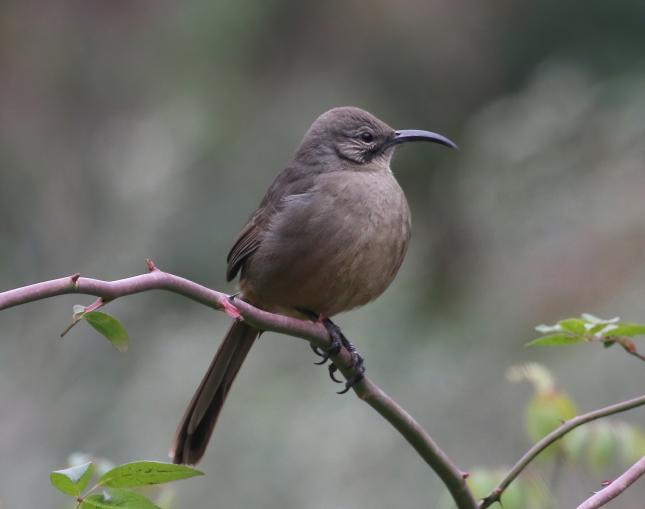California Thrasher
The California Thrasher is the largest of the thrashers. They are large, brown to grayish brown birds with very long tails and long legs. The throat is pale and the bird has a buffy or rusty patch under the tail. The California Thrasher's bill is very long and strongly curved. 
Like its relative the Northern Mockingbird, the California Thrasher incorporates imitations of other birds’ songs into its own song, especially birds that are common in chaparral. These include the California Quail, Wrentit, California Scrub-Jay, Bewick’s Wren, Nuttall’s Woodpecker, Spotted Towhee, and Lesser Goldfinch.
The California Thrasher bears a striking resemblance to many species of birds that use similar habitats around the world, such as the scimitar-babblers of Asia and the earthcreepers of South America. These species all forage on the ground for insects using long, curved bills, yet none of the groups are closely related to each other. This phenomenon, in which species evolve similar traits in response to similar conditions, is called “convergent evolution.”
Most California Thrashers live their entire lives in chaparral habitat, a plant community that has evolved with regular, intense fires during the dry months. Studies indicate that they reach their peak population densities in chaparral about 20 years after a burn.
The oldest recorded California Thrasher was at least 9 years, 2 months old when it was recaptured and rereleased during banding operations in California in 2013. It had been banded in the same state in 2005.
Forages singly or in pairs on the ground, tossing aside leaf litter with bill to expose insects and other invertebrates. Also eats berries. Males perch prominently and sing from roughly November through July and are sometimes joined in song by the female.
This species is on the Yellow Watch List for its restricted range.
California Thrashers can be found in parks around the Conejo & San Fernando Valleys. Some people are lucky enough to have a California Thrasher visit their yards!
Most of the above is taken from All About Birds

